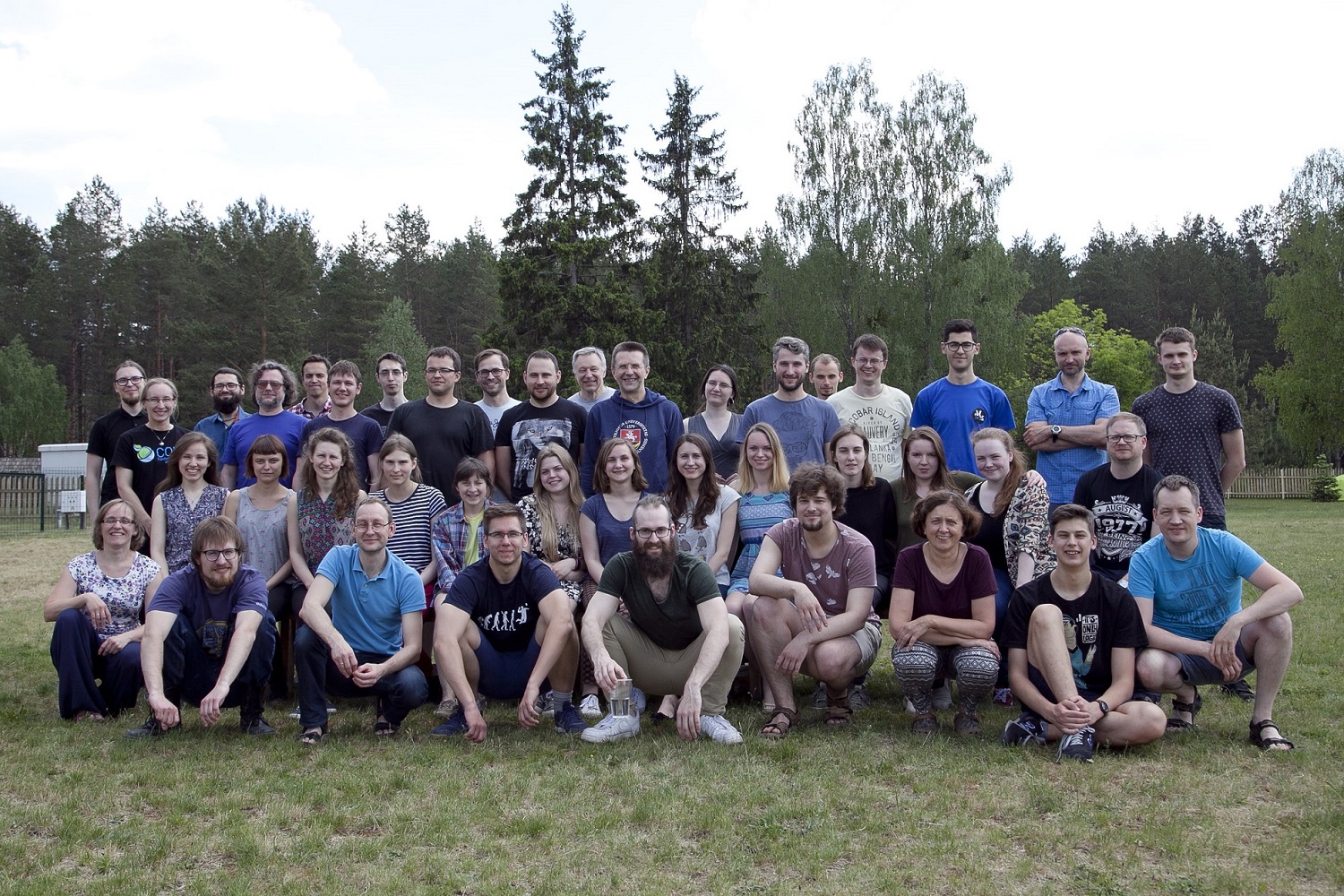The prestigious scientific journal Nature has published an article entitled 'Transposon-associated TnpB is a programmable RNA-guided DNA endonuclease' by scientists from Vilnius University (VU) Life Sciences Center.
With this study, VU researchers have answered the question of the function of the TnpB protein. Here we show that TnpB of Deinococcus radiodurans ISDra2 is an RNA-directed nuclease that is guided by RE-derived RNA (reRNA) to cleave DNA next to the 5′ TTGAT transposon associated motif (TAM). We also show that TnpB could be reprogrammed to cleave DNA target sites in human cells. Together, this study expands our understanding of transposition mechanisms by highlighting the role of TnpB in transposition, experimentally confirms that TnpB is a functional progenitor of CRISPR-Cas nucleases and establishes TnpB as a prototype of a new system for genome editing.

'Many, I hope, have heard of 'DNA scissors', which are used for targeted genome editing. Proteins known as 'DNA scissors' are usually associated with CRISPR systems, but until now, it was not clear where they originated. Bioinformaticians have predicted that 'DNA scissors' may originate from the TnpB protein, which is associated with mobile genetic elements. However, neither the function of TnpB nor its link to CRISPR systems has been experimentally demonstrated so far,' says Prof. Virginijus Šikšnys, one of the authors of this publication.
For the first time, a group of VU scientists has shown that the TnpB protein, which is linked to mobile genetic elements called transposons, acts as an RNA-programmed nuclease that can cut DNA, i.e. TnpB acts as 'DNA scissors' independent of CRISPR systems. These experiments not only suggested for the first time a possible new function of TnpB in transposition, but also experimentally confirmed the hypothesis that the TnpB protein associated with mobile genetic elements is the ancestor of the 'DNA scissors'.
'This scientific publication in a top-ranked scientific journal is a wonderful academic gift to the entire VU Life Sciences Center community, which is celebrating its 5th anniversary. We are a young research centre, but it is clear that we are truly capable of competing successfully on an international scale and conducting relevant and highly important research. I am very happy and proud that our scientists have discovered a new gene editing tool, which I believe will attract a lot of interest from the scientific community in the very near future,' says Prof. Gintaras Valinčius, Director of VU LSC.
This is the first time that Nature, one of the world's most respected scientific journals, has published a paper by a team of solely Lithuanian scientists. So far, Nature has published papers by thirteen scientists from Lithuania, most of them in collaboration with foreign authors.
All the authors are or have been working at the Institute of Biotechnology of the VU Life Sciences Center, namely, Dr Tautvydas Karvelis, senior researcher; Gytis Druteika, PhD student, junior researcher, lab technician; Greta Bigelytė, PhD student, junior researcher, research biologist; Karolina Budrė, former researcher at the Institute of Biotechnology; Rimantė Žedaveinytė, lab technician, research biologist; Dr Arūnas Šilanskas, Senior Research Fellow; Dr Darius Kazlauskas, Senior Research Fellow; Dr Česlovas Venclovas, Distinguished Professor, Senior Research Fellow; Virginijus Šikšnys, Distinguished Professor, Senior Research Fellow.
